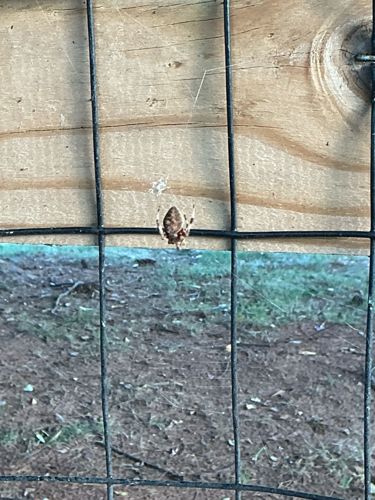Cross Orbweaver, European Garden Spider
Scientific Name: Araneus diadematus
Order & Family: Araneae (Spiders), Araneidae (Orb-weavers)
Size: Females typically 10-16 mm (0.4-0.6 inches); Males typically 4-8 mm (0.16-0.3 inches)

Natural Habitat
Gardens, woodlands, fields, and around human structures. They prefer areas with sufficient anchor points for their webs, such as trees, shrubs, fences, and buildings.
Diet & Feeding
Mainly flying insects like flies, mosquitoes, moths, and butterflies, which they catch in their orb-shaped webs.
Behavior Patterns
Known for building intricate, large, circular webs (orb webs) to catch prey. They often rebuild their webs daily, especially in the morning after dew has made the old web visible or after it has been damaged. Females are typically seen hanging head-down in the center of their web or hidden nearby, connected by a signal line. Males are smaller and more nomadic, seeking out females for mating.
Risks & Benefits
Risks: Generally harmless to humans. Their bite is uncommon unless provoked and is usually compared to a bee sting, causing mild local pain, swelling, and redness. Not considered medically significant. Benefits: Excellent pest control, as they consume a large number of nuisance and crop-damaging insects in gardens and agricultural settings.
Identified on: 9/22/2025